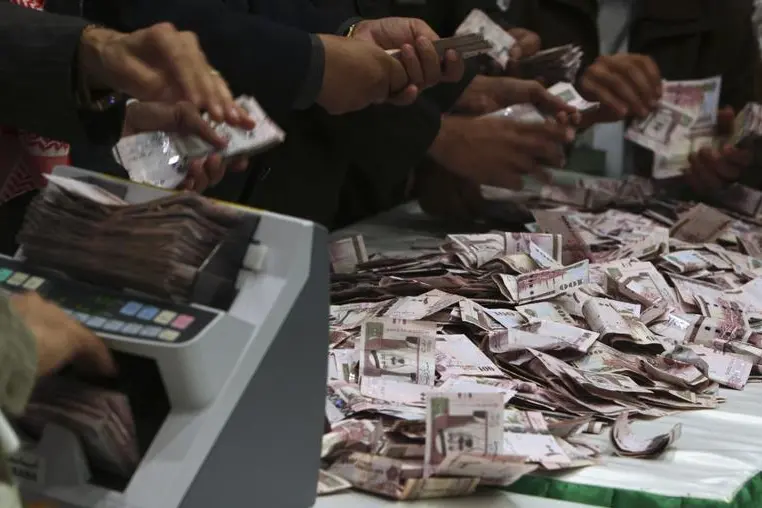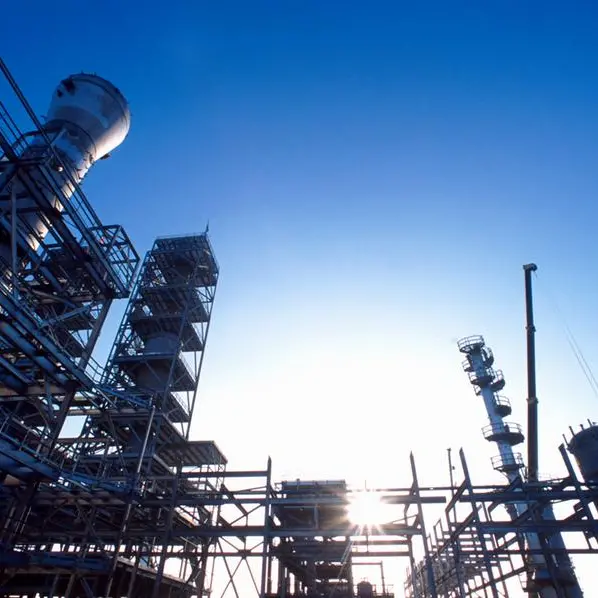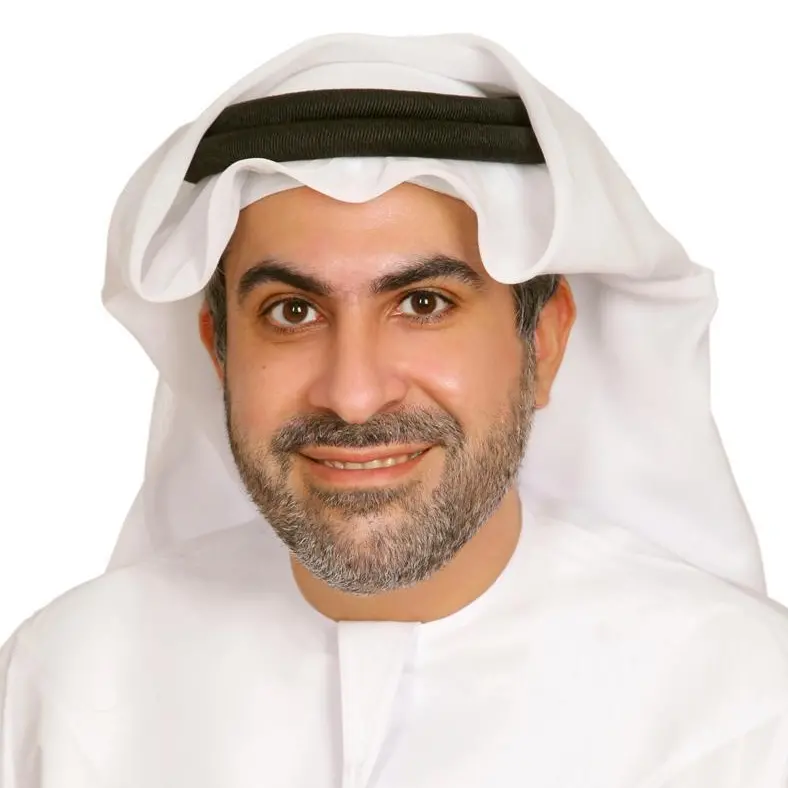PHOTO
Saudi Arabia released a 2018 state budget on Tuesday that is the largest in the kingdom's history, as it slowed an austerity drive to support flagging economic growth.
MONICA MALIK, CHIEF ECONOMIST AT ABU DHABI COMMERCIAL BANK
With the introduction of VAT, it will be difficult to reach the growth forecasts. The main agent of growth will be the government - everything depends on how quickly it can implement spending and kickstart investment programmes.
Consumers will be hit by VAT, and corporates will suffer from a weak domestic demand environment and economic reforms that have come through.
By pushing out the target for a balanced budget, they are allowing more time before reforms are introduced and allowing greater government expenditure than would be the case if the target was still 2020. They are balancing fiscal consolidation required by rating agencies and international investors - they can't have a blowout budget - with the domestic need to show progress with the economic transformation plan and boost the feel-good factor with stronger growth.
Looking at the revenue estimates, I believe the oil price assumption is US$53-55 per barrel for Brent with production at about 10 million barrels per day.
RAZA AGHA, CHIEF ECONOMIST AT VTB CAPITAL
The 2018 headline growth number appears a little optimistic at more than double the IMF’s recent estimate – Saudi projections seem driven by the oil sector as non-oil growth projections are broadly in line with the IMF.
The fiscal deficit target of 195 billion riyals in 2018 is about 20 percent lower than the IMF’s forecast for this year, driven by a revenue increase. Spending will rise about 5.5 percent, but is still lower than peak outlays of 1,140.5 billion riyals in 2014. 2018 deficit forecasts are in line with the IMF.
Assuming oil exports at 7.11 million barrels per day in 2018, the budget appears based on an oil price of just above US$50 a barrel, which is about $7 below the median consensus forecast for next year. However, whether this will mean a lower deficit remains to be seen, as non-oil revenues could underperform (and spending overshoot) given how anaemic growth remains in the non-oil economy.
Public debt will rise to 555 billion riyals, up about 25 percent-plus (or 117 billion riyals) over last year to 21 percent of GDP. While the pace of increase in debt is the slowest since 2015, the stock level is the highest since 2006.
NISHIT LAKHOTIA, HEAD OF RESEARCH AT SECURITIES & INVESTMENT CO (SICO) BAHRAIN
This is an expansionary budget and the markets will like it. The increase in non-oil revenue by 35 billion riyals looks conservative considering 2018 is the year when VAT is coming in, plus higher revenues are expected from expat levies and dependent tax. Where is that reflected in the revenue?
With this corruption purge, you will see that every penny that is being spent, there will be less leakage on it. The productivity of the expenditure will be better.
NASSER SAIDI, PRESIDENT OF DUBAI CONSULTING FIRM NASSER SAIDI & ASSOCIATES, AND FORMER ECONOMY MINISTER OF LEBANON
The Saudi 2018 budget reflects the modest recovery of oil prices during the latter half of 2017, which resulted in a lower budget deficit than expected and the start of the implementation of the National Transformation Programme 2.0 on a conservative estimate of oil prices in 2018.
Much hinges on providing the stimulus and incentives to the SME sector and women's greater participation in the labour force.
The year 2018 will be the litmus test for private sector engagement. Will we see PPP in infrastructure and development projects - including in public utilities, services and social capital sectors such as health and education - and the anticipated privatisation of SOEs, GREs and the "mother of all privatisations", Aramco?
The credibility of the NTP - whether 2.0 or 3.0- and Vision 2030 hinges on the Saudi Government and its agencies delivering on their promises and Saudi businesses and foreign investment buying in and investing.
The services sectors, including tourism and hospitality, and their support infrastructure of transport and logistics (ports, airports and their services) represent low-hanging fruit.
The focus should be to move away from budget austerity to increased public and private investment, to liberalisation, privatisation (we need to see a legal and regulatory framework), and removal of barriers to competition within the kingdom.
MOHAMED ABU BASHA, HEAD OF MACROECONOMIC ANALYSIS AT EFG HERMES
There’s not a lot of big surprises or disappointments. Oil revenue and non-oil revenue for 2018 are up, with the latter up as expected as there will be revenue from VAT and subsidies kicking in.
But it’s still not clear whether the stimulus announced last week of 72 billion riyals is included in the spending for 2018, or whether that stimulus is in addition to the budget. If it’s included it means the rise in spending is not much of an increase.
A big question is what the spending in 2018 will be by Public Investment Fund, as it will start to play a much larger role in 2018 and much of that is likely to be off-balance sheet. In previous years 90 percent of Saudi spending was in the budget, but the situation will be more complicated in the future as PIF and other funds become more active.
Basha estimated the 2018 budget assumed an average oil price of $51-52 per barrel.
MARCUS CHENEVIX, MENA ANALYST AT TS LOMBARD
The implied oil price to make this budget work is between $56 and $75 a barrel.
In the past, the government took about 60 percent of each barrel of oil as income. If we assume the same for next year, then the implied oil price is $75. So to generate a $56 oil price the government would have to take either 80 percent of revenues of each barrel, or they’ll have to export a lot more oil. Normally the kingdom is much more conservative than this in terms of oil prices.
They’re keeping salaries on hold. In the past, the biggest fiscal problem was salaries. So that’s definitely a step forward in terms of fiscal stability.
The stimulus programme will make a difference, as it increases supply of consumer and business credit, something that the real economy absolutely needs right now.
We were expecting low economic growth, lower than 1 percent for next year. I now expect it to be higher. This budget is good news for the Saudi domestic economy.
I expect a pick-up in Saudi equity markets. (Reporting by Davide Barbuscia, Tom Arnold, Alexander Cornwell, Saeed Azhar and Andrew Torchia; Compiled by Andrew Torchia)
© Reuters News 2017
MONICA MALIK, CHIEF ECONOMIST AT ABU DHABI COMMERCIAL BANK
With the introduction of VAT, it will be difficult to reach the growth forecasts. The main agent of growth will be the government - everything depends on how quickly it can implement spending and kickstart investment programmes.
Consumers will be hit by VAT, and corporates will suffer from a weak domestic demand environment and economic reforms that have come through.
By pushing out the target for a balanced budget, they are allowing more time before reforms are introduced and allowing greater government expenditure than would be the case if the target was still 2020. They are balancing fiscal consolidation required by rating agencies and international investors - they can't have a blowout budget - with the domestic need to show progress with the economic transformation plan and boost the feel-good factor with stronger growth.
Looking at the revenue estimates, I believe the oil price assumption is US$53-55 per barrel for Brent with production at about 10 million barrels per day.
RAZA AGHA, CHIEF ECONOMIST AT VTB CAPITAL
The 2018 headline growth number appears a little optimistic at more than double the IMF’s recent estimate – Saudi projections seem driven by the oil sector as non-oil growth projections are broadly in line with the IMF.
The fiscal deficit target of 195 billion riyals in 2018 is about 20 percent lower than the IMF’s forecast for this year, driven by a revenue increase. Spending will rise about 5.5 percent, but is still lower than peak outlays of 1,140.5 billion riyals in 2014. 2018 deficit forecasts are in line with the IMF.
Assuming oil exports at 7.11 million barrels per day in 2018, the budget appears based on an oil price of just above US$50 a barrel, which is about $7 below the median consensus forecast for next year. However, whether this will mean a lower deficit remains to be seen, as non-oil revenues could underperform (and spending overshoot) given how anaemic growth remains in the non-oil economy.
Public debt will rise to 555 billion riyals, up about 25 percent-plus (or 117 billion riyals) over last year to 21 percent of GDP. While the pace of increase in debt is the slowest since 2015, the stock level is the highest since 2006.
NISHIT LAKHOTIA, HEAD OF RESEARCH AT SECURITIES & INVESTMENT CO (SICO) BAHRAIN
This is an expansionary budget and the markets will like it. The increase in non-oil revenue by 35 billion riyals looks conservative considering 2018 is the year when VAT is coming in, plus higher revenues are expected from expat levies and dependent tax. Where is that reflected in the revenue?
With this corruption purge, you will see that every penny that is being spent, there will be less leakage on it. The productivity of the expenditure will be better.
NASSER SAIDI, PRESIDENT OF DUBAI CONSULTING FIRM NASSER SAIDI & ASSOCIATES, AND FORMER ECONOMY MINISTER OF LEBANON
The Saudi 2018 budget reflects the modest recovery of oil prices during the latter half of 2017, which resulted in a lower budget deficit than expected and the start of the implementation of the National Transformation Programme 2.0 on a conservative estimate of oil prices in 2018.
Much hinges on providing the stimulus and incentives to the SME sector and women's greater participation in the labour force.
The year 2018 will be the litmus test for private sector engagement. Will we see PPP in infrastructure and development projects - including in public utilities, services and social capital sectors such as health and education - and the anticipated privatisation of SOEs, GREs and the "mother of all privatisations", Aramco?
The credibility of the NTP - whether 2.0 or 3.0- and Vision 2030 hinges on the Saudi Government and its agencies delivering on their promises and Saudi businesses and foreign investment buying in and investing.
The services sectors, including tourism and hospitality, and their support infrastructure of transport and logistics (ports, airports and their services) represent low-hanging fruit.
The focus should be to move away from budget austerity to increased public and private investment, to liberalisation, privatisation (we need to see a legal and regulatory framework), and removal of barriers to competition within the kingdom.
MOHAMED ABU BASHA, HEAD OF MACROECONOMIC ANALYSIS AT EFG HERMES
There’s not a lot of big surprises or disappointments. Oil revenue and non-oil revenue for 2018 are up, with the latter up as expected as there will be revenue from VAT and subsidies kicking in.
But it’s still not clear whether the stimulus announced last week of 72 billion riyals is included in the spending for 2018, or whether that stimulus is in addition to the budget. If it’s included it means the rise in spending is not much of an increase.
A big question is what the spending in 2018 will be by Public Investment Fund, as it will start to play a much larger role in 2018 and much of that is likely to be off-balance sheet. In previous years 90 percent of Saudi spending was in the budget, but the situation will be more complicated in the future as PIF and other funds become more active.
Basha estimated the 2018 budget assumed an average oil price of $51-52 per barrel.
MARCUS CHENEVIX, MENA ANALYST AT TS LOMBARD
The implied oil price to make this budget work is between $56 and $75 a barrel.
In the past, the government took about 60 percent of each barrel of oil as income. If we assume the same for next year, then the implied oil price is $75. So to generate a $56 oil price the government would have to take either 80 percent of revenues of each barrel, or they’ll have to export a lot more oil. Normally the kingdom is much more conservative than this in terms of oil prices.
They’re keeping salaries on hold. In the past, the biggest fiscal problem was salaries. So that’s definitely a step forward in terms of fiscal stability.
The stimulus programme will make a difference, as it increases supply of consumer and business credit, something that the real economy absolutely needs right now.
We were expecting low economic growth, lower than 1 percent for next year. I now expect it to be higher. This budget is good news for the Saudi domestic economy.
I expect a pick-up in Saudi equity markets. (Reporting by Davide Barbuscia, Tom Arnold, Alexander Cornwell, Saeed Azhar and Andrew Torchia; Compiled by Andrew Torchia)
© Reuters News 2017












